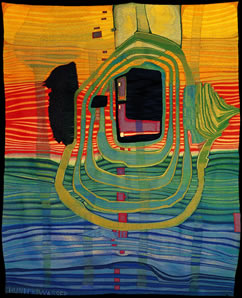
|
When transforming his works into a tapestry, Hundertwasser’s main concern was to have this done freehand - a transmission of one of his works into a different medium and the quality of the artistic interpretation by the weaver without pattern or cardboard template. In Hundertwasser’s opinion, only this procedure, without a cardboard template, could breathe life into the work, thus an authentic work of art could evolve and not just a soulless copy of the model. This is the reason why all Hundertwasser’s tapestries are unique examples. |